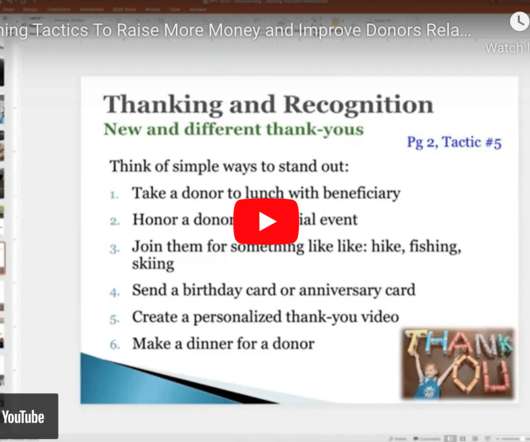Why Movement Is the Killer Learning App for Nonprofits
Beth's Blog: How Nonprofits Can Use Social Media
FEBRUARY 11, 2014
There are also physical theories like brain-based learning and neuroscience. I came across a brain scan by Dr. Chuck Hillman from University of Illinois Neurocognitive Kinesiology Laboratory. The sitting brain is really disengaged. The lab does research on the relationship between physical fitness and cognitive function.

















Let's personalize your content